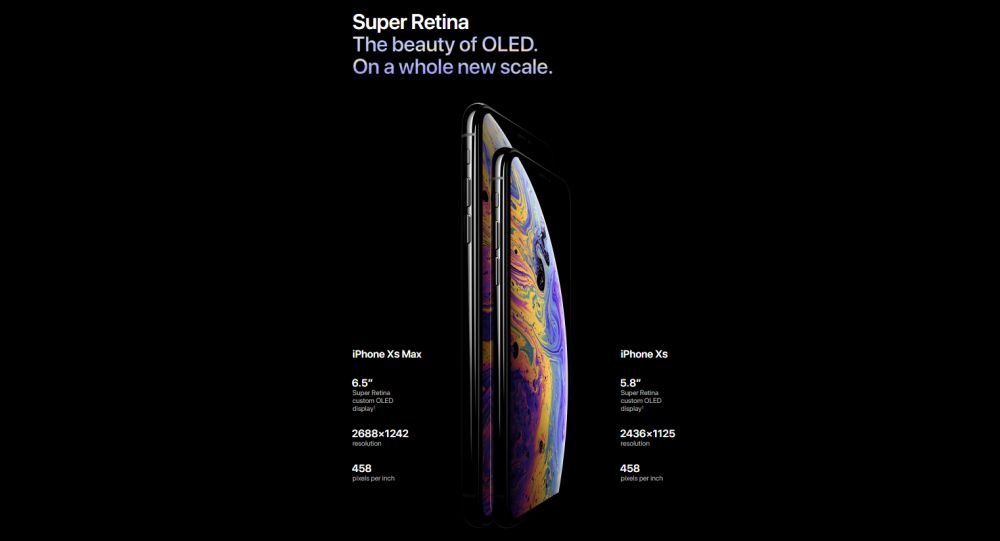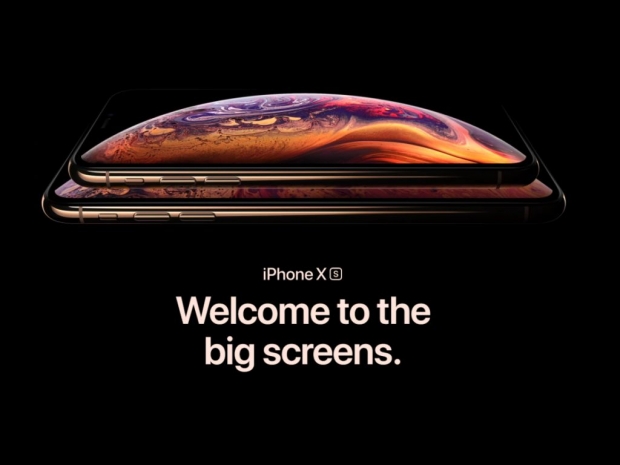Apple's Phil Schiller took the rather difficult role of announcing the new iPhone Xs, which retains the same design of the iPhone X, 5.8-inch OLED screen and similar dimensions, but with the all new A12 Bionic SoC.
In fact, the dimensions of the iPhone Xs are exactly the same as the iPhone X, with the same front and back glass and the stainless steel frame, although now coming with a shiny new gold color option and IP68 protection. The screen is still a 5.8-inch 2436x1125 resolution Super AMOLED screen with Dolby Vision/HDR10 support, but now it has 120Hz touch sensing as well.
In addition to the iPhone Xs, Apple also unveiled an even larger iPhone Xs Max, with a 6.5-inch Super AMOLED screen with 1242x2688 resolution. This one is slightly larger than the iPhone Xs, as it measures 157.5x77.4x7.9mm and also comes with a larger 3300mAh battery.
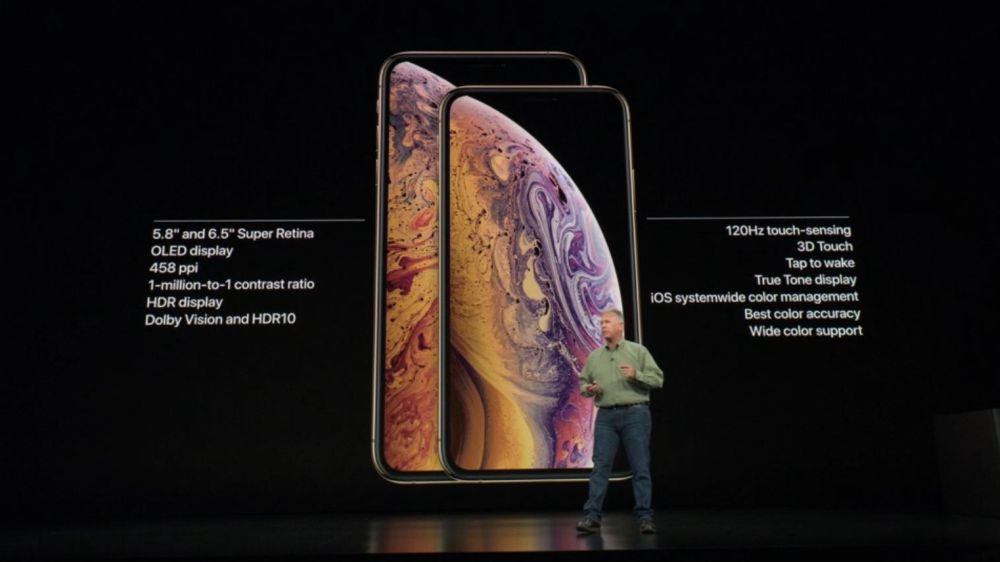
Apple did not update the camera setup that much, but the main sensor has larger pixels, 1.4µm, with the same f/1.8 aperture, while the telephoto sensor has a f/2.4 lens with 2x optical zoom and OIS. It also brought several software enhancements, mostly focused on HDR and the new Neural Engine inside the A12 Bionic SoC.
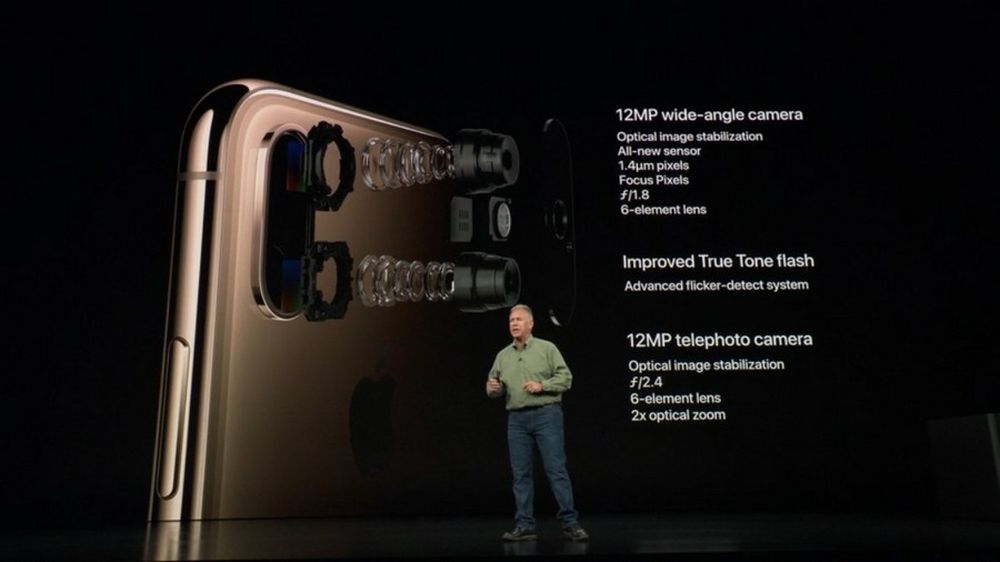
The notch on the front packs quite a few sensors including infrared camera, flood illuminator, proximity sensor, ambient light sensor, front camera, which is still a 7-megapixel one, and a dot sensor, some of which are used for Face ID as the only biometric feature since the Touch ID is now officially dead.
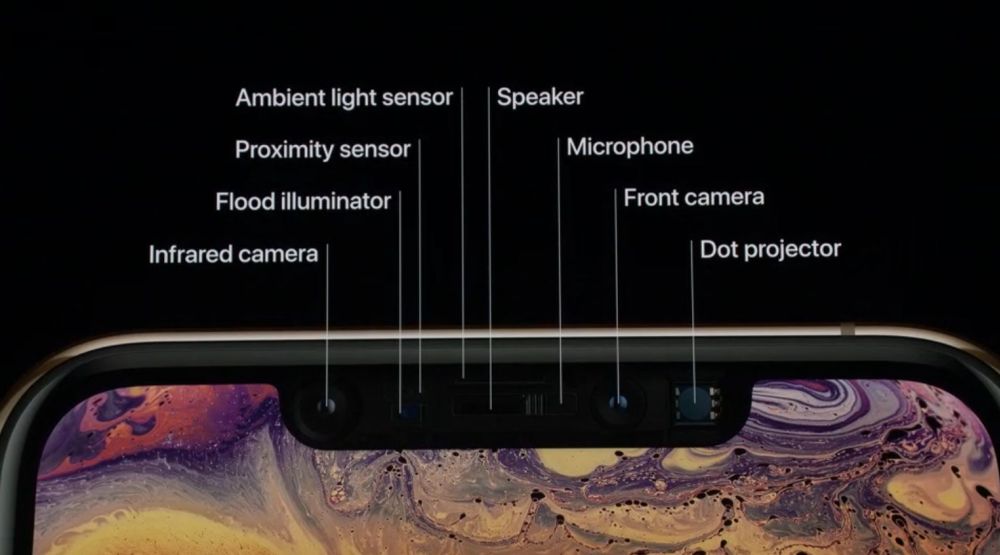
Fancy new A12 Bionic SoC has a lot of power
Both the iPhone Xs and the iPhone Xs Max will be powered by the same Apple A12 Bionic SoC. While Apple might claim this is the "industry's first 7nm chip", the precise description would be the first 7nm that will come to market, as both Qualcomm and Huawei have already announced their 7nm SoCs.
The A12 Bionic SoC comes with a 6-core Apple Fusion CPU with two high-performance and four low-performance cores, a quad-core GPU, which should be up to 50 percent faster, and all new A12 Neural Engine, which is an 8-core design and has much higher neural performance with up to 5 trillion neural operations per second, compared to mere 600 billion on the A11 SoC.
We'll talk about the A12 Bionic in a separate article. It is an impressive update to the A11 Bionic SoC and likely to provide a lot more performance.
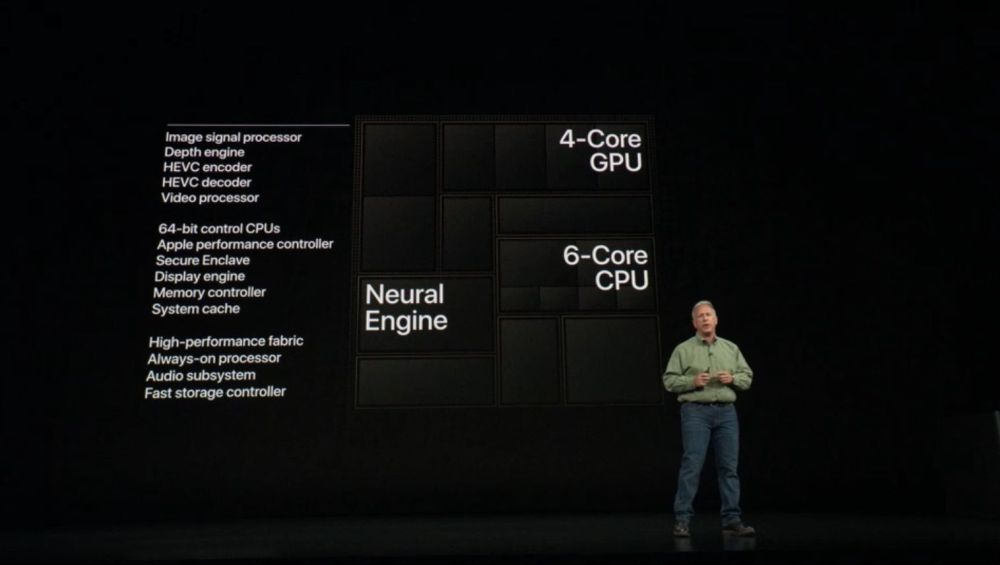
Availability and insane pricing
The iPhone Xs and the iPhone Xs Max will be available in 64GB, 256GB, and 512GB versions, and will be available for pre-order from Friday, September 14th and launch on September 21st. Both will come in two waves, some regions getting it on September 21st while others will have to wait for September 28th.
The price of the iPhone Xs starts at $999, for the 64GB version while the iPhone Xs Max starts at $1,099. The 512GB version of the iPhone Xs goes for $1,349 while the iPhone Xs Max with the same storage sells for $1,449.
On a similar note, there is always a cheaper iPhone Xr but that is a whole different experience.
